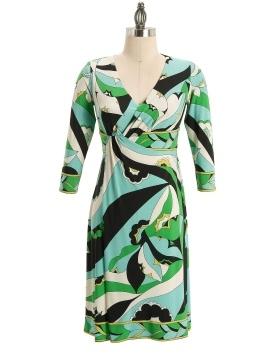Sewing clothes is a very interesting and fascinating affair, although it requires some skills and knowledge. So, for example, an uninitiated person never thought that all the dresses that you can meet are made according to one basic pattern. In individual tailoring, it is built for each client separately, and for production they take generally accepted standard measures by which patterns are built. And here the most interesting process begins - modeling the basis of the dress. What exactly happens with the pattern at this stage, and how to learn how to create your own details for sewing the model you like?
Everything is quite simple. In fact, this is the transfer of darts to shaped lines, and as additions and decorative elements to the dress, draperies and folds are made. Knowing the basics of design and having very few practical skills, you can cope even with the most complex style.
So, dress modeling assumes the presence of a basic pattern, which is of three types: fitted, semi-fitted and free silhouette. The constructed basis needs to be adjusted to fit your particular shape. To do this, cut out the details from unnecessary fabric and make a fitting, on which defects will be immediately visible, so they should be fixed. When the base is adjusted, you can take on the modeling of the dress.

After careful consideration of a specific model, all seams, folds and changes in cuts on the main workpiece are drawn. These lines should pass through the tops of existing tucks. After this easy step, we proceed to cutting and closing the unnecessary model line. If the dress modeling involves dividing the base into a large number of horizontal and vertical elements, then before cutting it, you need to put the direction of the shared thread on each part and mark the waist line. After cutting, the creased parts are stacked on a large sheet of paper or a regular construction oilcloth and, taking into account the allowances and laying the draperies, are cut as a single element. The remaining components are ready for transfer to the fabric.
You can also simulate the dress directly on the fabric, but this applies to small changes, such as a decrease or increase in the neckline, transfer of tucks from the armhole to the side cut and vice versa.
To make the sewn dress as similar to the original as possible, you need to take into account the proportions of the shaped lines, this applies to the height of the waist, all kinds of color inserts, the length of the skirt and sleeve. After all, if it is incorrect to calculate the ratio of growth and, for example, the contrast strip under the chest, a completely different silhouette will turn out, and the visual perception of the finished product will change.
Modeling a women's dress can be of varying complexity, and it is better for a beginner in this business to start with the simplest styles, with a minimum number of deviations from the basic pattern. But having mastered the design principle, it will be possible to create unique outfits, because you can make changes not only on the dress pattern, in the same way you can come up with interesting variations of jackets, skirts, sundresses, trousers and even outerwear.